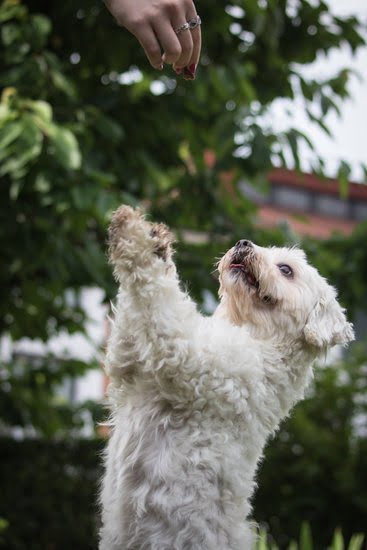Can I Crate Train My Dog At Six Months Old
The answer to this question is a resounding yes! You can absolutely crate train your dog at six months old. In fact, crate training is a great way to help your dog learn good house manners and can be an invaluable tool for house training a new puppy.
The key to successful crate training is to make sure that your dog sees the crate as a positive place. You can do this by making sure the crate is always associated with good things, such as treats, toys, and plenty of positive attention. When your dog is comfortable in the crate, you can start using it as a place to put him when you’re not able to supervise him, such as during dinner time or when you’re out of the house.
If you have a six-month-old puppy, be sure to start crate training right away. It will help make house training a breeze and will give you a tool to use for when you need to leave your dog home alone.
Can Dogs Be Trained To Pee In Specific Places Outside
There is a lot of debate surrounding this topic, but the answer is yes, dogs can be trained to pee in specific places outside. However, it is important to note that this is not a simple process, and it will take a lot of time and patience on your part.
The first step is to start training your dog when he is still a puppy. This will make the process much easier, as puppies are more flexible and easier to train than adult dogs. When you are housebreaking your puppy, always take him outside immediately after he eats, drinks, or plays. Once he has successfully gone to the bathroom outside, praise him and give him a treat.
It is also important to be consistent with your training. If you allow your dog to pee inside one time, he will likely expect to be able to do so again in the future. Make sure that you are always taking your dog outside to pee, and that he only has access to the outdoors when you are able to supervise him.
If you are having trouble getting your dog to pee in the right spot, you can try using a cue word or signal. When your dog is ready to go, say “pee” or make a specific hand gesture. Once he has successfully gone to the bathroom in the right spot, praise him and give him a treat.
It will likely take some time and patience, but with consistent training, your dog can be successfully trained to pee in specific places outside.
Can Service Dog Candidates Count As In Training
There is a lot of confusion about what constitutes a service dog. The Americans with Disabilities Act (ADA) does not define service dog, but states that a service dog is a dog that is individually trained to do work or perform tasks for a person with a disability. The work or tasks performed by a service dog must be directly related to the person’s disability.
So, what is a service dog candidate
A service dog candidate is a dog that has not yet been fully trained, but shows the potential to be a service dog. Often, service dog candidates are dogs that have been rescued from a shelter or that have been donated to a service dog organization.
Can service dog candidates count as service dogs
Service dog candidates can count as service dogs, but they must be fully trained and certified as service dogs. Service dog organizations often have rigorous certification processes that candidates must complete before they can be considered service dogs.
Can People Train Dogs To Howl
On Cue
There is a lot of debate surrounding the topic of whether or not people can train dogs to howl on cue. Some people believe that it is definitely possible to train dogs to howl on cue, while others believe that it is not possible. There is no right or wrong answer to this question, as it depends on the individual dog and the individual person. Some dogs are very easy to train, while others are more difficult. Some people are very skilled at training dogs, while others are not.
If you are interested in trying to train your dog to howl on cue, there are a few things that you will need to keep in mind. First of all, you will need to be patient and take your time. Dogs do not learn things overnight, and you will need to be consistent with your training in order to achieve the desired results. Secondly, you will need to be creative and find different ways to motivate your dog. Some dogs may respond well to treats, while others may respond better to praise or toys. Finally, you will need to be consistent with your commands. If you tell your dog to howl and he does not respond, do not get frustrated. Just keep trying and be patient.
There are a number of different techniques that you can use to train your dog to howl on cue. One popular technique is to use a command such as “speak.” You can start by saying the command and then giving your dog a treat. Once your dog has mastered this, you can start saying the command and then making a noise yourself. Once your dog has mastered this, you can start saying the command and then howling. Be sure to reward your dog each time he or she howls on cue.
It is important to keep in mind that not all dogs will be able to be trained to howl on cue. Some dogs simply do not have the ability to do this. If you are not successful in training your dog to howl on cue, do not get discouraged. Just enjoy the fact that your dog can howl whenever he or she wants to!
Can Dogs Be Trained To Detect Epileptic Seizures
There is a great deal of anecdotal evidence that dogs can be trained to detect epileptic seizures. However, there is very little scientific evidence to support this claim. Some studies have shown that dogs can be trained to respond to certain smells associated with seizures, but there is no evidence that they can actually predict seizures. There are also concerns that dogs may be trained to respond to certain smells associated with seizures even if the person does not have epilepsy. For this reason, it is important to be cautious about using dogs to detect seizures. If you are considering using a dog to detect seizures, be sure to consult with your doctor and neurologist to make sure it is safe and appropriate.

Welcome to the blog! I am a professional dog trainer and have been working with dogs for many years. In this blog, I will be discussing various topics related to dog training, including tips, tricks, and advice. I hope you find this information helpful and informative. Thanks for reading!





